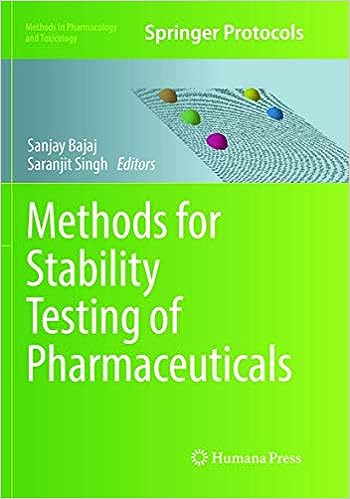Comprehensive Guide to FDA Stability Testing for Emerging Biologics
Introduction
Stability testing is a critical component in the development of biologics, ensuring these complex and sensitive products maintain their safety, efficacy, and quality throughout their lifecycle. The U.S. Food and Drug Administration (FDA) provides specific guidance for stability testing of new and emerging biologics, such as gene therapies, cell-based treatments, and mRNA vaccines. This article explores FDA requirements, challenges, and best practices for conducting stability testing for biologics in compliance with regulatory standards.
Understanding FDA Stability Testing Requirements for Biologics
FDA stability testing guidelines align with
- Determining Shelf Life: Establishing the product’s expiration date based on long-term and accelerated studies.
- Defining Storage Conditions: Recommending temperature, humidity, and light conditions for optimal storage.
- Ensuring Product Safety: Confirming that biologics remain free from harmful degradation products.
Tip: Customize stability protocols based on the specific characteristics and requirements of the biologic product.
Key Components of FDA Stability Testing for Biologics
1. Long-Term Stability Testing
Long-term testing evaluates the product’s quality under recommended storage conditions over its intended shelf life. Typical parameters include:
- Temperature: 2°C to 8°C for refrigerated products.
- Sampling Intervals: Regular intervals such as 0, 3, 6, 12, 18, and 24 months.
Example: For mRNA vaccines, long-term studies confirm stability at ultra-low temperatures (-70°C).
2. Accelerated Stability Testing
Accelerated testing simulates long-term stability under stress conditions to predict the product’s shelf life in a shorter time:
- Temperature: 25°C ± 2°C or higher, depending on the product’s sensitivity.
- Duration: Typically conducted for up to six months.
Tip: Use accelerated testing data to establish provisional shelf life until long-term data is available.
3. Stress Testing
Stress testing evaluates the biologic’s behavior under extreme conditions to identify degradation pathways. Conditions may include:
- High temperature and humidity.
- Freezing and thawing cycles.
- Exposure to light (photostability testing).
Tip: Conduct stress testing during early development to guide formulation and packaging design.
4. Freeze-Thaw Stability
Many biologics require storage at low or ultra-low temperatures. Freeze-thaw studies are critical for evaluating the impact of freezing and thawing on product stability:
- Key Parameters: Potency, aggregation, and physical appearance.
- Cycle Testing: Subject the product to multiple freeze-thaw cycles to mimic real-world handling.
Example: CAR-T cell therapies require robust freeze-thaw stability testing to ensure viability during distribution.
Critical Quality Attributes in Stability Testing
The FDA emphasizes monitoring critical quality attributes (CQAs) to ensure biologics maintain their intended properties over time. Key CQAs include:
- Potency: Biological activity of the product.
- Structural Integrity: Monitoring aggregation, denaturation, and fragmentation.
- Purity: Levels of impurities and degradation products.
- Microbial Stability: Sterility and preservative efficacy.
Tip: Use advanced analytical techniques, such as mass spectrometry and chromatography, for accurate assessment of CQAs.
Challenges in Stability Testing for Emerging Biologics
Conducting stability testing for biologics presents unique challenges:
- Complexity of Biologics: These products are sensitive to environmental conditions and require advanced testing methods.
- Short Shelf Life: Some biologics, such as cell therapies, have limited viability, complicating long-term studies.
- Cold Chain Dependence: Maintaining ultra-low temperatures during storage and transportation adds logistical challenges.
Solution: Leverage specialized testing facilities and advanced technologies to address these challenges effectively.
Packaging and Stability Testing
The FDA highlights the importance of the container-closure system in maintaining product stability. Key considerations include:
- Compatibility: Evaluating interactions between the biologic and packaging materials.
- Protection: Ensuring the container protects against moisture, oxygen, and light.
- Labeling: Providing clear storage instructions to maintain stability.
Tip: Conduct stability testing with the final container-closure configuration to validate its performance.
Best Practices for Compliance with FDA Guidelines
To ensure compliance with FDA stability testing requirements, manufacturers should adopt these best practices:
- Plan Early: Incorporate stability testing into the early stages of biologic development.
- Validate Methods: Use validated analytical techniques to ensure accurate and reliable results.
- Customize Protocols: Tailor testing protocols to address the specific characteristics of the biologic.
- Engage Regulators: Collaborate with the FDA to clarify requirements and address concerns.
- Leverage Technology: Use advanced data management systems to streamline testing and reporting.
Emerging Trends in Stability Testing for Biologics
Advancements in science and technology are shaping the future of stability testing for biologics. Key trends include:
- AI and Machine Learning: Predictive modeling tools provide insights into stability trends, reducing reliance on extensive studies.
- Digital Transformation: Cloud-based platforms improve data integrity and facilitate real-time reporting.
- Sustainability: Adoption of eco-friendly packaging and energy-efficient stability chambers aligns with global environmental goals.
Future Outlook: The FDA is likely to incorporate these advancements into future guidelines, reflecting the evolving needs of the biologics industry.
Conclusion
FDA stability testing guidance for new and emerging biologics provides a robust framework for ensuring the quality and safety of these innovative products. By adhering to these guidelines, leveraging advanced technologies, and adopting best practices, manufacturers can navigate the complexities of biologics stability testing and achieve regulatory compliance. As the industry evolves, proactive adoption of emerging trends will be essential for success in the competitive biologics market.
